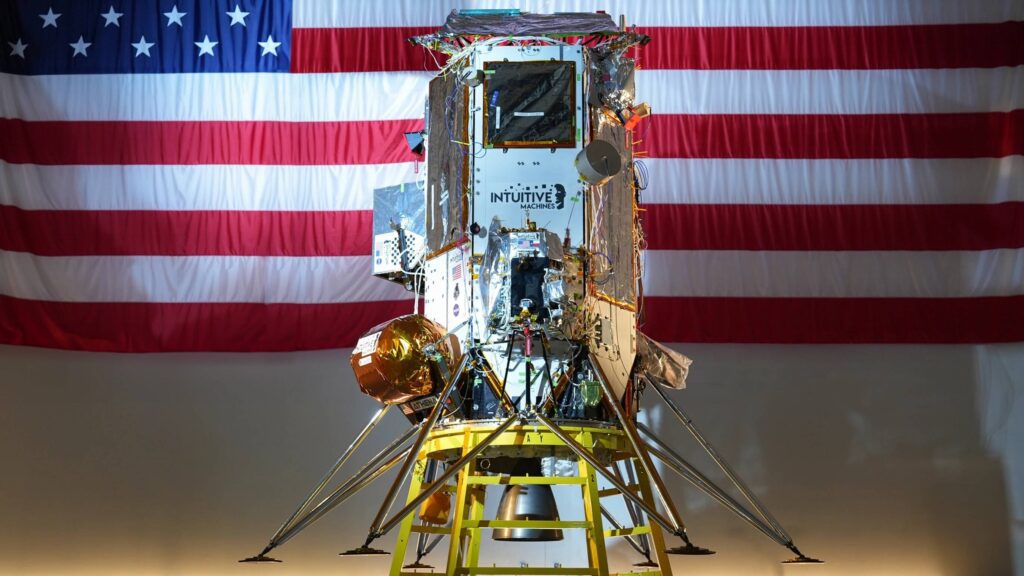The Athena Lander, built by Texas startup Intuitive Machines, landed on the Moon’s Mont Smouton region but did not achieve its intended vertical position, remaining horizontal instead. CEO Steve Altemus stated that while the transport to the Moon was successful, they are still gathering data on its current condition. The previous lunar lander, Odysseus, failed to operate properly after a fast landing and damage.
Critics have pointed out the design flaws of Athena, which is tall and narrow, potentially compromising stability. Despite its current position, it is still generating some electricity, prompting the flight team to manage its systems to extend its operational life. Tim Crane, Chief Technology Officer, emphasized that any successful lunar landing is a positive achievement.
Athena carries several scientific payloads, including NASA’s Polar Resources Ice Mining Experiment, which aims to find signs of water in the lunar regolith. It also features a laser retroreflector array for tracking and a commercial mini lander called Grace, intended for further exploration. Additional payloads include the Mobile Autonomous Exploration Platform, designed to survey the terrain, and two rovers, including a small Japanese probe named Yaoki. The team is assessing which scientific instruments can still be deployed given the current conditions, as all cargo is still operational and in communication. The landing site is considered significant for future manned missions to the Moon.
Source link


